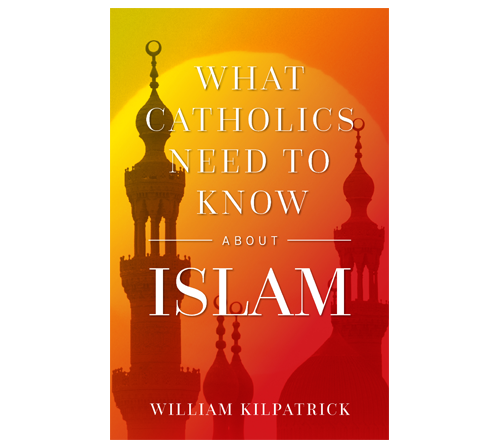Back in January, Bezhani Sarvar, a Muslim security guard attacked The City Hall in Edmonton , Canada with a firearm and Molotov cocktails. In a four minute online video, he explained to his “brothers and sisters before I do my mission” that he was taking revenge for the “genocide” in Gaza:
“Salam-Alaikum, brothers and sisters. Inshallah. I’ll succeed with my mission. If I don’t succeed, I know somebody else will succeed for me. Salam-Alaikum.”
What was his motive? In a brief piece about the attack, Daniel Greenfield noted, “According to the CBC, “Edmonton Police continue to investigate the motive for the attack.”
This brought back memories of another jihad attack that occurred on July 14, 2023 in Fargo, North Dakota, which left one dead and three wounded before the assailant, Muhamad Barakat, was killed by a policeman. Since the trunk of Barakat’s car contained explosives, a small arsenal of firearms and 1,800 rounds of ammunition, it looked as though he had a much larger jihad in mind. And sure enough, his cell phone revealed that he had been searching for “mass shooting events”–a search that ended with the headline “Thousands enjoy first day of Downtown Fargo Street Fair.”
What was his motive? The Star Tribune reported that “the motive for his actions remains unclear,” the U.S. attorney for the district of North Dakota said that “if there was clear evidence of a motive we would share it,” and North Dakota Attorney General Drew Wrigley asserted that “the shooting was not motivated by religious beliefs.”
Not motivated by “religious beliefs?” In a Marcel Proust-like moment of remembrance it came back to me that I had written a whimsical piece on the topic of the missing religious motive seven years ago. Have things changed since then? It doesn’t seem so. If anything, the authorities have learned that they can avoid the issue of motive with complete impunity.
Here’s the original piece:
Groundhog Day – Jihad Version
I think I’ve seen this movie before. The plot goes something like this: a man drives a car into a crowd of people, gets out of his vehicle, shouts an Arabic phrase, begins to stab bystanders, and is shot by police.
You probably know the rest of the story. Ordinary people immediately understand that it’s another jihad attack. But the police and the media are baffled. They spend hours and sometimes days looking into the possibility that it might be an act of terrorism. By the time they finally decide that it is terrorism, most people have moved on to the next news cycle.
Then there’s the question of identity. Who did it? At first the assailant is simply identified as a “man.” Then, after a suitable interval, he’s identified as a “London resident” or a “resident of Marseille,” or whatever the case may be. Next we learn that he’s an “Asian man” (if the incident occurs in England) or a “North African man” (if in France). Finally, we are told that it is a Muslim man, but by this point many have lost interest.
Next comes the matter of motive. Of course, the average citizen already knows the motive: the jihadist did it for the sake of Allah and the seventy-two virgins. But for some reason the Kabuki ritual must be played out to the end. Very often there is no end – that is, no motive is ever found. The authorities decide that the perpetrator acted irrationally. He was mentally ill or emotionally disturbed, or other kids bullied him in school.
As Governor John Kasich said after a Muslim student at Ohio State University perpetrated a car and knife attack on fellow students, “we may never totally find out why this person. . .snapped.” One sometimes gets the impression that the authorities never want to know. That would explain why the motivation behind the crime is usually left hanging.
At any rate, the mystery-motive motif is a recurrent plot feature. After Khalid Masood’s car and knife rampage, which left several dead and forty wounded in London recently, a senior police official said, “We must accept that there is a possibility we will never understand why he did this.”
One thing you can be sure of in the official version is that whatever the motive, it has nothing to do with Islam. The authorities are uncertain about everything else, but they are always quite certain of that. The denial comes in several variations: “this has nothing to do with Islam,” “this is a perversion of a great religion,” ”No religion condones terror,” and even, “this is a betrayal of Islam.”
The latest iteration comes from Digby Jones, a former Minister of State for Trade in the U.K. In regard to Masood’s jihadi-style attack, Jones said, “I think the fact that the man is a Muslim is utterly and completely irrelevant.”
Another predictable plot feature is that much time is spent determining whether the jihadist is a “lone-wolf” or a card-carrying member of ISIS. The authorities and the press seem to favor the lone-wolf scenario, perhaps because the terror threat seems less ominous when only one person is involved. Another possibility is that the authorities bear less blame for not preventing the attack since there’s no way of predicting when and where a lone wolf will strike.
As it turns out, however, the lone wolves are often “known wolves” – known to the police, that is, for various previous crimes. Moreover, the lone wolves are not that lonely. They usually have family and friends who know what they’re up to, and, not infrequently, they have made contact with terrorist group operatives prior to the attack. In addition, they share a common belief system with jihadists everywhere. What belief system is that? Well. . .let’s move on.
The final act of this ritual theater is a statement – by a governor, a president, or a prime minister – to the effect that we won’t change who we are to suit the terrorists. As U.K. Prime Minister Theresa May said after the Westminster Bridge attack, “Let me make it clear today. . .any attempt to defeat our values through violence and terror is doomed to failure.”
Apparently, one of those key values is tolerance. U.K Home Secretary Amber Rudd put it this way:
The British people will be united in working together to defeat those who would harm our shared values. Values of democracy, tolerance, and the rule of law.
“Tolerance?” Isn’t that the value that got England into this mess in the first place? Well, never mind. No one but the media pays attention to such statements of resolve.
We’ve been hearing that sort of thing for a dozen years, and the jihad attacks keep multiplying. On the same day as the London terror attack, a Muslim migrant in southern Italy tried to run down police with a car. He then attacked and injured an officer with a knife. The next day in Antwerp, a Muslim man drove a car loaded with assault rifles and knives into a crowd on a busy shopping street.
I haven’t seen the follow-up stories, but presumably both men were mentally ill, the incident had nothing to do with Islam, and the police will be searching for a motive for a long time to come.
That’s the routine. And it seems that we are expected to get used to it. Prime Minister May said that people should just continue to act normally because that’s “the best response to terrorism.” Meanwhile, London Mayor Sadiq Khan said that despite the attack, London would return to “business as usual.” But business as usual now includes the ritual re-enactment of the jihad terror cycle.
In a way, the “movie” we are in resembles the plot of Groundhog Day. Like the main character in the movie, we seem doomed to witness the same ritual day after day, week after week. There’s still hope, of course. After he finally gains some wisdom, the hero of Groundhog Day breaks out of the cycle.
Will we?
Postscript: Seven years have passed and we still haven’t broken out of the loop. It’s still considered impolite to mention jihad. And for an officer of the law, departing from the script can mean demotion or job loss.
“Groundhog Day– Jihad version” originally appeared in the April 4, 2017 issue of The Catholic Thing.
Pictured above: Groundhog (Ai generated image)
Picture credit: Pixabay


